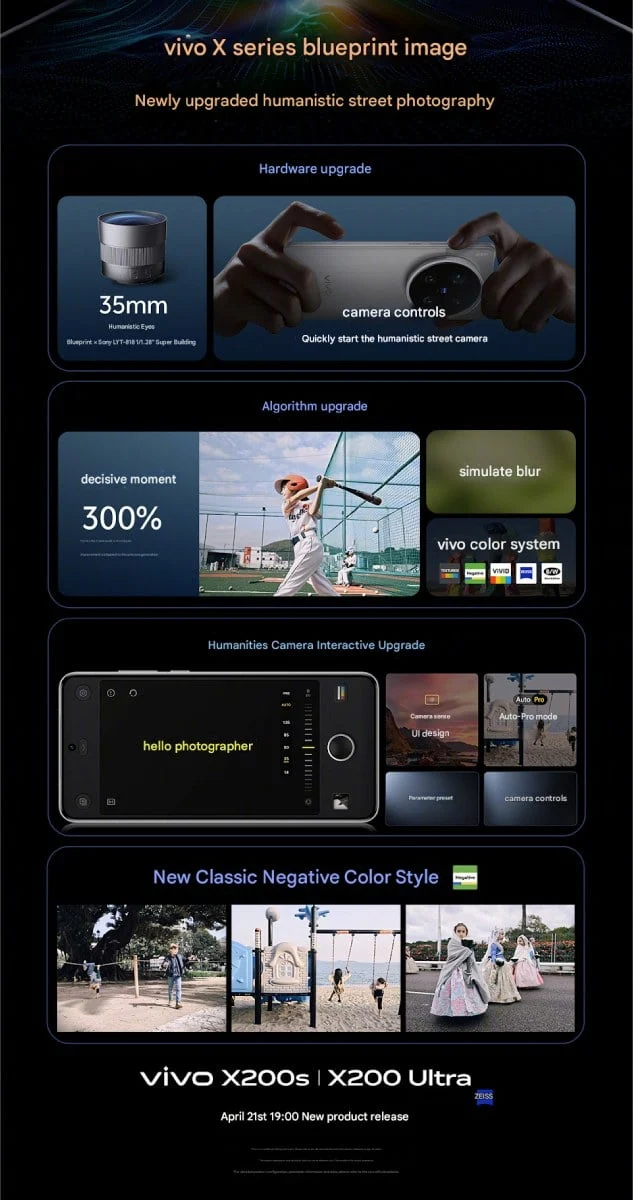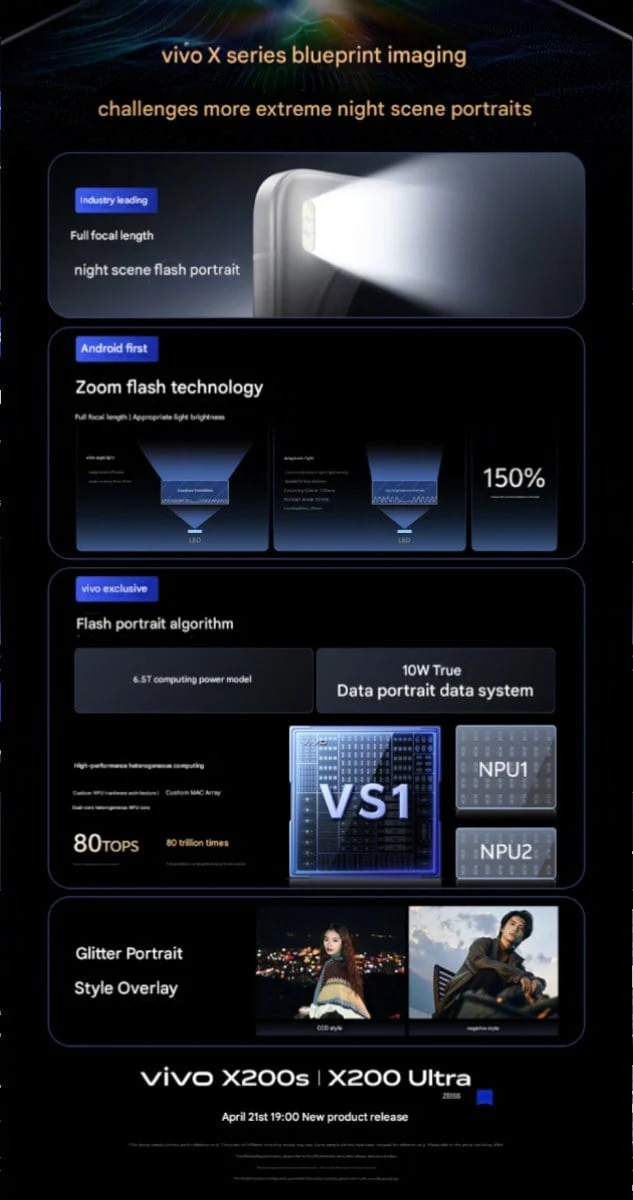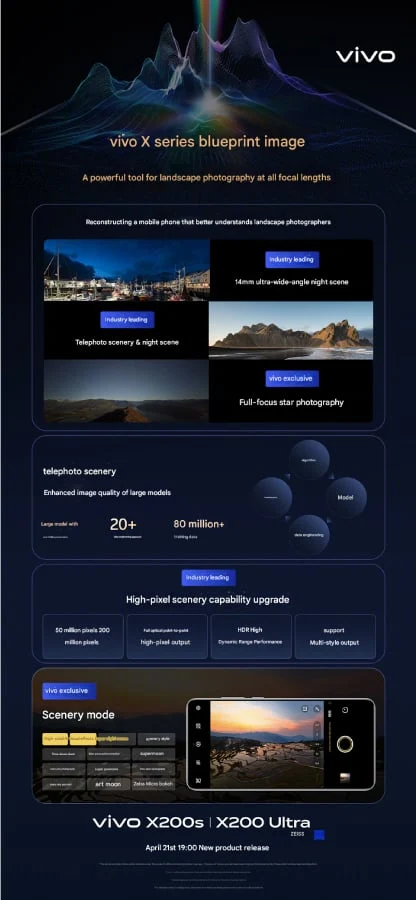Key Takeaways
1. The Vivo X200 Ultra features a 35mm primary camera with a Sony LYT-818 sensor and Zeiss T-coated lens, known for its advanced optical stabilization and low light reflection.
2. It includes a customized ultra-wide camera with significant light intake and faster shutter speed, also utilizing the Sony LYT-818 sensor.
3. The telephoto lens boasts a 200MP Samsung HP9 sensor, offering improved light performance and stability, and is the first APO-grade configuration in a mobile device.
4. The new VS1 chip powers the camera system, enabling advanced AI processing for portrait photography, real-time bokeh rendering, and HDR processing.
5. Low-light photography capabilities feature multiple modes for night shots, enhanced by extensive scene recognition models trained on over 80 million samples.
The Vivo X200 Ultra represents a significant step forward in camera phone technology. An executive from the company even referred to it as “a pocket camera that can make calls.” Vivo has been gradually revealing the phone’s imaging capabilities over recent weeks, but today, it shared the complete specifications through a series of posts on its official Weibo account. There’s much to explore, so here’s a concise overview of the key features.
Camera Features of the Vivo X200 Ultra
The core of the X200 Ultra’s camera setup features a new 35mm primary camera utilizing the Sony LYT-818 sensor. This is a 1/1.28” sensor combined with a Zeiss T-coated lens, which is notably the first in the world to use GLC 2.0 ultra-low dispersion glass. The lens benefits from optical stabilization, featuring CIPA 5.0-level OIS. Additionally, Vivo is showcasing its third-generation VCS bionic spectral imaging technology here, with the lens achieving sub-0.1% visible light reflection thanks to enhanced anti-glare coatings.
Advanced Imaging Technology
The ultra-wide camera maintains a high-quality sensor strategy, also utilizing the Sony LYT-818, but this one has been specially customized in collaboration with Zeiss. This 14mm “Hawk Eye” lens promises an impressive 181% increase in light intake and a 216% faster shutter speed than its earlier model. It comes equipped with dual-axis optical image stabilization.
Next is the 85mm telephoto lens, which features a 200MP Samsung HP9 sensor and is touted by Vivo as the first APO-grade telephoto configuration in a mobile device. It has a six-element design that enhances clarity and includes 5.0-level OIS. Vivo claims this new module offers 38% improved light performance and 41% more stable results compared to its predecessor.
Innovative Processing Power
Supporting this entire camera system is the new VS1 chip, which is Vivo’s first AI ISP (image signal processor) boasting 80 TOPS of computing power and outstanding energy efficiency at 16 TOPS/W. This chip is designed to manage tasks such as real-time bokeh rendering, HDR processing, and complex multi-frame image stacking.
Portrait photography is a key feature of the X200 Ultra. It can capture images from 24mm to 100mm, enhanced by AI-driven skin rendering, lighting adjustments, and million-level 3D ray tracing for bokeh effects. There is also a unique “Humanistic Street Photography” mode that emphasizes quick-launch capabilities, 35mm framing, and a film-like visual style.
The X200 Ultra can record 4K portrait videos across all focal lengths, optimizing skin tones through the HSV algorithm, and boasts nearly zero shutter delay owing to the new VS1 chip.
Low-Light Photography Options
Low-light photography is given equal attention. Users can take shots ranging from (14mm) ultra-wide to long-range telephoto at night. A variety of modes such as Supermoon, Zeiss Micro Bokeh, and Starry Sky are available to capture intricate details of the night sky.
For scene recognition and visual quality, Vivo claims to utilize models trained on over 80 million samples, which includes large-scale image sets and data-engineered photo simulations.
The Vivo X200 Ultra is scheduled for an official launch on April 21st.
Source:
Link






Leave a Reply